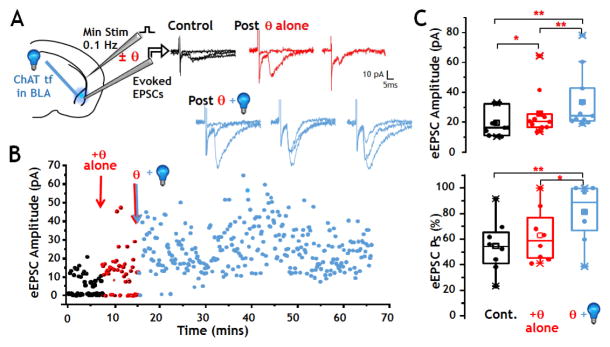FIGURE 6. Stimulation of cholinergic inputs to BLA enhances plasticity induced by θ burst stimulation of cortical afferents.
A: Left: Schematic of configuration for voltage clamp recording from BLA principal neurons. Right: sample recordings of single electrical evoked responses of cortico-BLA synapses before θ burst (4 × 50 Hz bursts, 200 ms inter-burst intervals) (black, control), post θ burst alone (red), and post θ burst plus photo-stimulation (blue). θ burst alone briefly increased the eEPSC amplitude and success rate. After θ burst plus optogenetic stimulation, both the amplitude and the rate of successful evoked responses to 0.1 Hz stimulation of the EC were significantly increased.
B: Plot of eEPSCs obtained from a representative BLA principal neuron in response to 0.1 Hz stimulation before (black), after θ burst stimulation alone (red), and after optogenetic stimulation paired with θ burst stimulation (blue). Electrical stimulations of the external capsule that did not elicit a post synaptic response (i.e. failures) are indicated by amplitudes of 0 pA. The number of failures was briefly reduced after θ burst stimulation alone. Thirty mins following θ burst stimulation + photo-stimulation of the cholinergic terminal fields, failures were eliminated (i.e. eEPSC success probability approached 100%). The amplitude of eEPSCs briefly increased after θ burst stimulation alone whereas enhancement of eEPSC amplitude was sustained for the duration of the recording after pairing of θ burst stimulation and photo- stimulation.
C: Box and scatter plot of population data of eEPSCs amplitude (upper) and eEPSC success probability (Ps; lower) before patterned stimulation (control, shown in black), after θ burst stimulation (red), and after θ burst plus opto stimulation (blue). Top: θ burst stimulation alone induced a significant but brief increase in amplitude (p < 0.03, n = 11). Paired θ burst stimulation plus optogenetic stimulation also significantly increased the population eEPSC amplitude (p < 0.001, n = 11). The increase induced by θ burst stimulation plus photo-stimulation was significantly greater than the increase induced by θ burst stimulation alone. Bottom: Success rate was not increased by θ burst alone. A significant increase was seen after paired stimulation (p = 0.007, n = 8). See also Fig S2 and S5.

